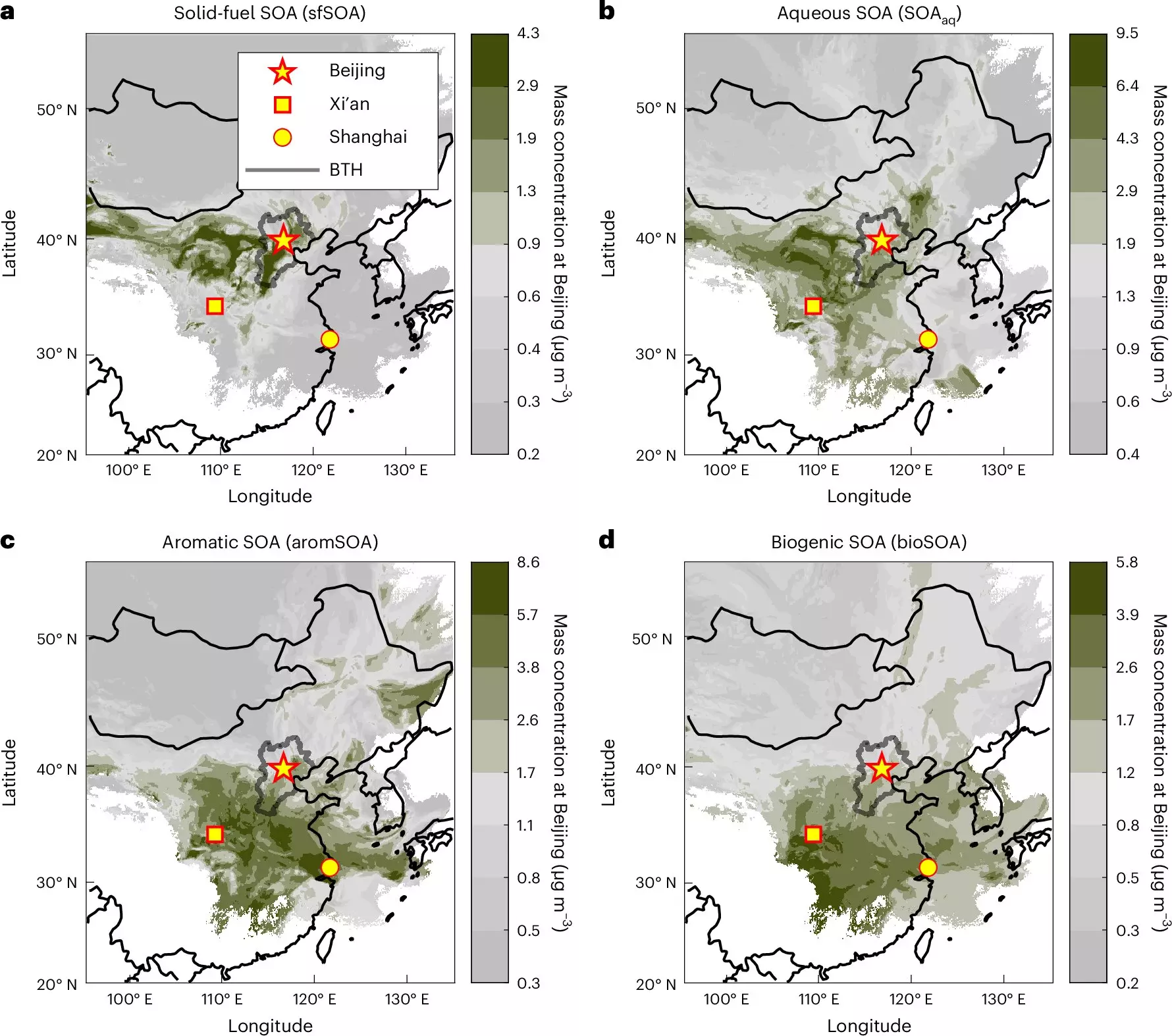Air pollution remains a critical global issue, with millions succumbing to its adverse effects each year. An international study led by the Paul Scherrer Institute (PSI) has unveiled groundbreaking methodologies to trace the sources of aerosols responsible for the notorious smog blanketing Beijing, China. Understanding the origins of these pollutants is essential not only for mitigating their immediate health impacts but also for crafting long-term strategies to improve air quality throughout the densely populated areas surrounding the capital. This article delves into the exciting findings of this research and emphasizes the significance of nuanced pollution management strategies tailored to seasonal variations.
Traditionally, identifying the exact sources of air pollution has posed a formidable challenge to scientists and policymakers alike. The intricate nature of atmospheric chemistry complicates our understanding, as pollutants undergo numerous transformations before reaching ground level. However, the recent study spearheaded by Kaspar Dällenbach has made substantial strides in addressing this gap. Leveraging a state-of-the-art mobile aerosol mass spectrometer, the researchers were able to conduct real-time analyses of air quality and better discern the chemical composition of the aerosols involved.
One of the most significant revelations from the study is the variability of pollution sources between seasons. For instance, during winter months, a pronounced increase in secondary organic aerosols correlating with the burning of wood and coal was identified, mainly sourced from the wider Beijing-Tianjin-Hebei region. Conversely, smog during the summer months is heavily influenced by urban emissions traveling from the southern regions, reinforcing the notion that pollution is not an isolated city-centric problem but a complex, regional phenomenon.
The researchers’ pioneering use of a mobile aerosol mass spectrometer has transformed aerial pollution analysis, facilitating unprecedented insights into the molecular makeup of smog. This approach enables the identification and distinction between primary aerosols—those directly emitted into the atmosphere—and secondary aerosols, which develop as these primary particles undergo chemical reactions on their journey through the air. By dissecting these components, the study authors can ascertain the specific pollutants contributing to Beijing’s air quality woes.
Dällenbach’s team specifically highlighted that while reductions have been observed in certain emissions, such as sulfur dioxide from coal combustion, the persistence of poor air quality in the region remains alarmingly high. This situation underscores the intricacies tied to pollution management; even reduced emissions do not guarantee immediate improvements in overall air quality, as secondary pollutants continue to pose substantial threats.
The findings from this study extend beyond mere identification of pollution sources. They emphasize the critical need for collective action across various jurisdictions. The smog affecting Beijing does not arise from a single source but rather from a concoction of pollutants that traverse extensive distances. This insight implies that efforts to combat air pollution demand comprehensive engagement from regions not only within but also beyond Beijing itself. Collaboration between municipalities and neighboring provinces is essential for implementing effective pollution control measures.
Moreover, the lessons derived from this research are not confined to China. Dällenbach’s methodologies are being applied to evaluate air quality in European cities and urban centers in the Global South, providing a more globally relevant framework for tackling atmospheric concerns. The ability to adapt these innovative tools to other contexts opens up promising avenues for comprehensive studies aimed at understanding the dynamics of air quality and human health related to pollution.
Ultimately, the implications of this research resonate far beyond academic discussions; they carry profound relevance for public health policy and urban planning. As Dällenbach succinctly states, “Our work shows that although we are focusing on pollution within Beijing, smog is a large-scale regional phenomenon in which aerosols from different sources are transported over hundreds of kilometers.”
To effectively address the challenges posed by air pollution, a multifaceted strategy must emerge, one that recognizes the interconnectedness of urban environments and implements comprehensive measures accordingly. Only through sustained cooperation and innovative research methods can we hope to navigate the complexities of air pollution and safeguard the health of populations worldwide.


Leave a Reply